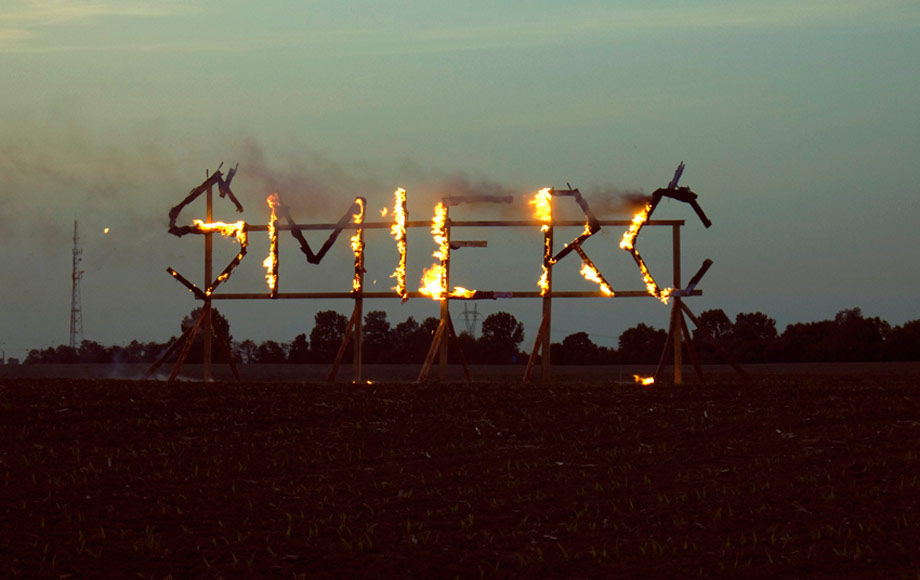Political overtones are hard to ignore in an ambitious eight artist show at Pippy Houldsworth Gallery, says William Kherbek

Pippy Houldsworth Gallery is exhibiting an ambitious eight artist group show entitled Containing the Possible. Group shows create strange ecologies as different works mark their aesthetic territories. This analogy is not idle; from a critical perspective, thinking about group shows can resemble a type of folk science. Coincidences of subject matter or material usage can prompt spurious associations and presumptions of patterns where they are not intended—or particularly welcomed by—given artists. In the case of Containing the Possible, it is hard to keep politicised readings of the works from bubbling up.
Benedict Drew’s piece, Drone, this is less problematic. The work consists of a print of a drone (or, to use the military’s preferred term “unmanned aerial vehicle”) placed over a speaker which is attached to a nearby DVD player. The speaker emits a sound one expects is quite familiar in the Federally Administered Tribal Areas of the Pakistani frontier with Afghanistan. It all seems quite innocuous, which is, presumably, part of Drew’s point. The seductive banality of the image and the sound mirrors the quiet way terms like “drone strike” have insinuated themselves into our vocabulary.
Konrad Smoleński’s video work Śmierć/The Death is a more problematic case. Smoleński’s film centres on a burning wooden sign reading “ŚMIERĆ” as it is slowly consumed. The sign sits in a field next to a railway track. It’s a strangely hypnotic six minutes as you watch the letters blaze and decompose.Though there was nothing overtly political in the work, it too seemed to have an aura of protest about it. I doubt that would be how Smoleński would see it, but such are the vagaries of the group show.
“The speaker emits a sound one expects is quite familiar in the Federally Administered Tribal Areas of the Pakistani frontier with Afghanistan”
Somewhere in between Smoleński and Drew’s sensibilities is the work of Jörg Obergfell who has a forlorn,arresting photographic triptych in the show. The work shows a plastic bag suspended on a stick in an empty street that could pass for—and very possibly is—Canary Wharf at the weekend.
Deserted pavements, streets and sleeping office buildings surround this bleak little flag. It feels like a requiem for the last thirty years of hyperfinance, and in that sense, it couldn’t be timelier, but there’s enough
humour in the neatness of the image to keep it from being reducible to mere politics. It’s a difficult trick to manage, steering between the Scylla and Charybdis of social engagement and sloganeering, but Obergfell manages it deftly.
There were performances on the opening night and, in truth, they were far less effective than the static works. Jirĭ Kovanda’s work Fence, in which a man cuts off the hem of a woman’s skirt as she stands obediently still and then places the resultant fabric on a plinth, loses some of its mystery
in the performance of the act, but the finished product somehow redeems it.
Jenny Moore’s fragmentary, at times too self-regarding, performance of a Proposal for a Rock Opera is unlikely to receive backing unless Max Bialystock is in town. Again, the instruments and projector with which she performed the work had enough presence on their own. Why kill a good idea by realising it?
Containing the Possible shows at Pippy Houldsworth from 5th July to 1st September




